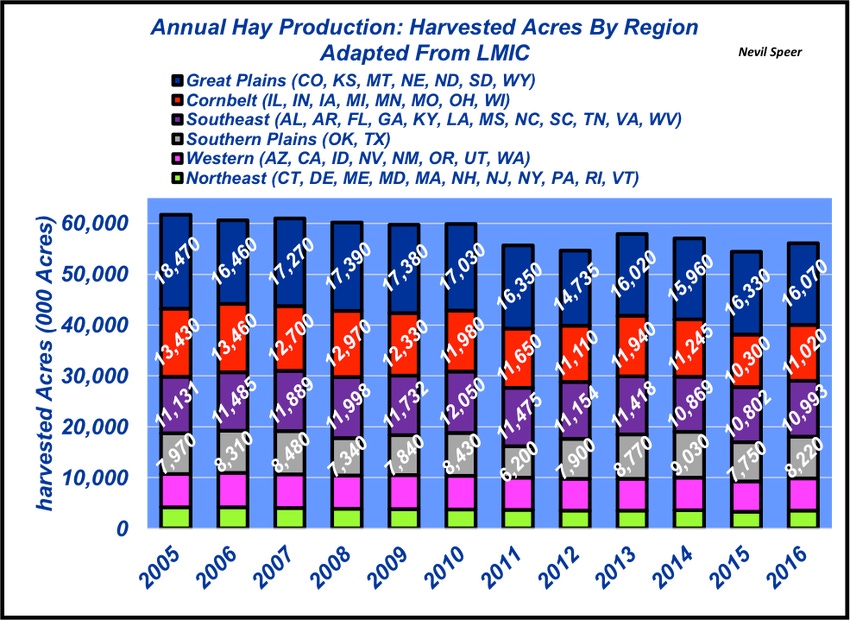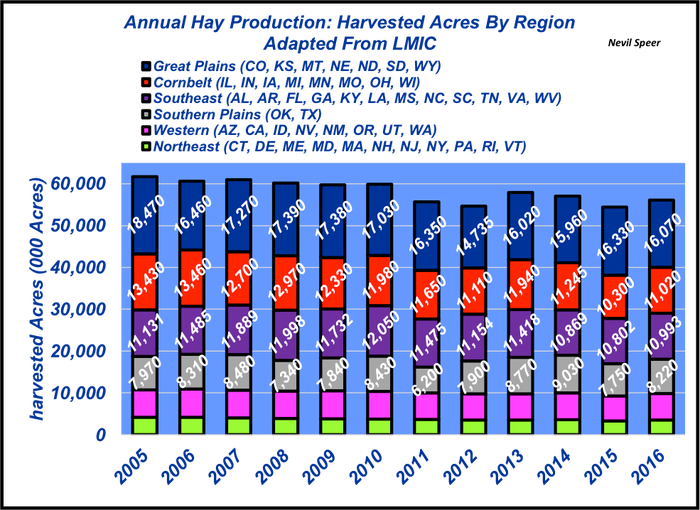Hay acres were up in 2016, at least in the parts of the country where drought wasn’t evident. What does that mean for cow inventory?
January 19, 2017

Absent of a drought, this is the time of year when last summer’s hay production becomes of special interest. Will we have sufficient hay supplies to make it through the winter? That’s especially important as the beef industry continues in expansion mode – there are more cows to feed versus previous years.
The most important determinant of overall hay supply stems directly from acreage – that is, hay yields don’t vary nearly as much year-to-year compared with corn and/or other grain crops.
This week’s illustration highlights harvested hay acreage by region since 2005. Total hay acreage in 2016 equaled 56.1 million, up 1.7 million acres versus 2015 but down from 2013 and 2014 – and well off the 60 million-plus acres observed between 2005 and 2010.
Grain prices, livestock prices and weather all play a factor in year-over-year variance: some years, a pasture may be grazed versus hayed or previous grain acreage may be switched over to grass or alfalfa. For example, the biggest regional gain in 2016 occurred in the Corn Belt — up over 800,000 acres in 2016 versus 2015.

Hay acreage an important measure to monitor going forward as beef cow inventory grows and hay exports become an increasingly important component of the hay market. More forage ground is important to support more cows and more hay being shipped out of the country.
Where do you see hay acreage headed in the years to come? What do your local hay supplies look like? Are you seeing a shift in the hay production business in your region? Leave your thoughts in the comments section below.
About the Author(s)
You May Also Like





